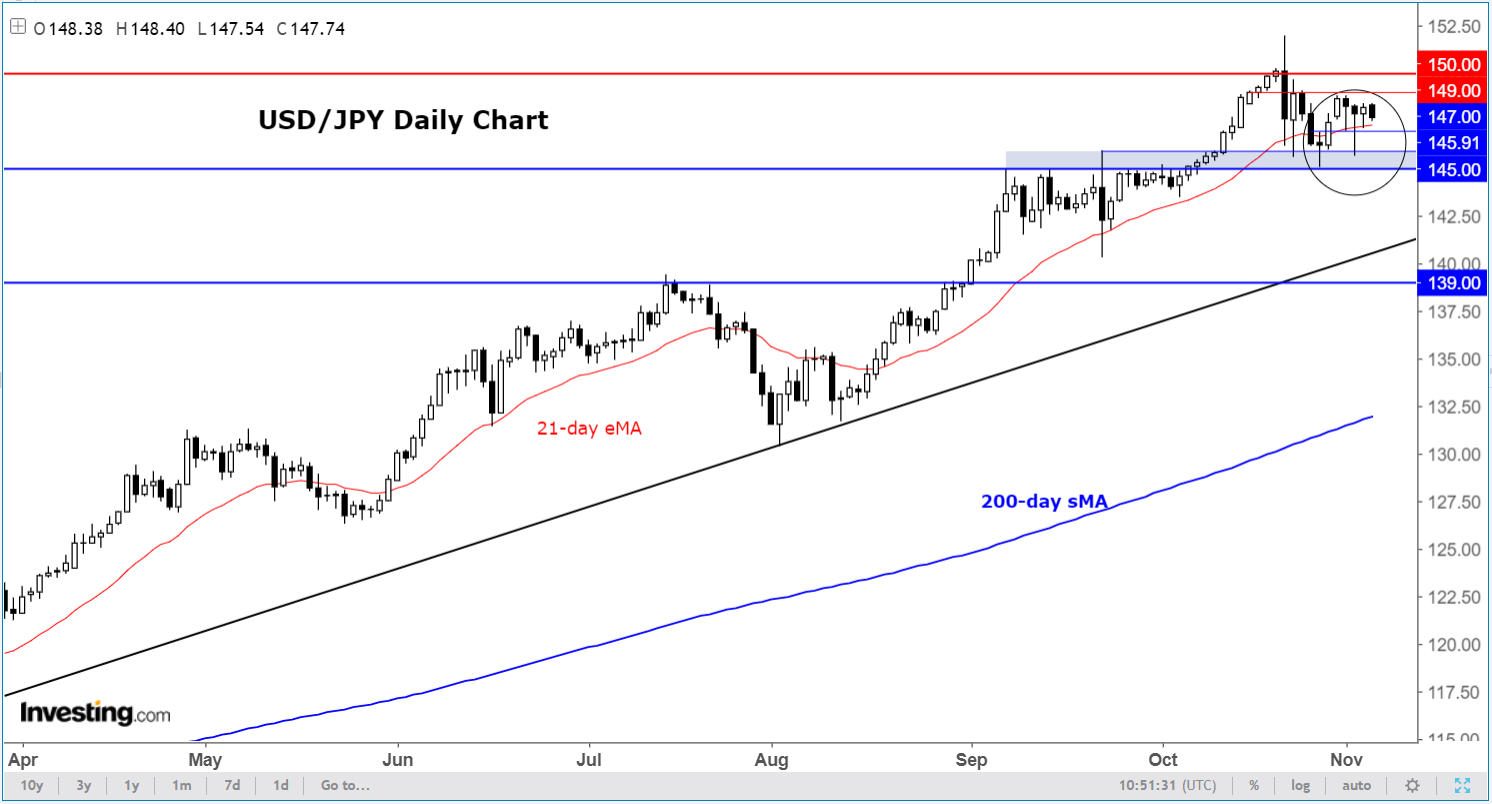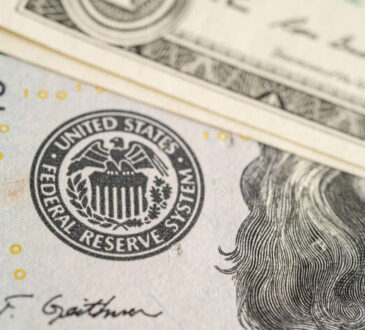
- Repeated intervention fails to deliver intended impact on yen
- Dollar remains supported thanks to a very hawkish Fed
- USD/JPY holding above key support in a strong bullish trend
Speculation over China its zero-COVID policy boosted sentiment in the first half of Friday’s session. The focus is going to shift to the world’s largest economy with the publication of the report. Among the foreign exchange pairs to watch is the , which looks to end another volatile week on the high, barring a very weak US jobs report or another big intervention from the Japanese government. Even if another intervention takes place, this will unlikely have a lasting impact—as we have seen in the previous cases.
For now, the USD/JPY is holding its own rather well, above its 21-day exponential moving average and key support around 145.00 -146.00 area.

With price holding support and making higher highs and higher lows, there’s no technical reason for the bears to step in yet, not until something changes fundamentally. Therefore, the path of least resistance continues to be to the upside, and we could see the USD/JPY climb above the 150 handle in the coming days.
The USD/JPY made back its initial losses in the aftermath of the FOMC’s fourth consecutive 75 basis point on Wednesday. Although we saw more signs of weakening economic data on Thursday, this was ignored by USD/JPY traders. The persistence in inflation is preventing the Fed from pivoting to a dovish stance, which is why FX traders are ignoring weakness in US data—at least for now. As Powell made it clear at the FOMC press conference, the Fed expects to raise interest rates even higher than previously thought. This is because remains stubbornly high, and employment is also very strong. Will the October nonfarm payrolls report continue to show strength in the labor market today, or buck the trend?
As the continues to rise, foreign currencies keep tumbling one after another. No other major currency had it worse than the yen in recent times, thanks to inaction by the Bank of Japan (BoJ).
To be fair, it is a very difficult task to defend your currency as normal central bank actions just don’t work or are not feasible when stagflation is so bad. Most central banks have had no option but to either let their currency slide or tighten interest rates to prevent the interest-rate differential against the US not to grow too large.
By keeping its monetary policy extraordinarily loose, this is exactly what the BoJ has achieved: a slumping currency. But this is not good when you are importing things priced in US dollars, for example .
So, Japan’s government has had to step in to intervene by selling the dollar reserves it holds. But this hasn’t proved to be very effective. Selling dollar reserves is just a short-term fix. Investors know full well that dollar reserves are not unlimited.
The only way this trend can reverse is when the Federal Reserve pivots to a dovish stance, which can happen for two main reasons: weakening inflationary pressures or a severe recession—neither of which are very likely at the moment. So, the onus is on the BoJ to change tack—and it has repeatedly refused to do that. The USD/JPY is thus likely heading for 150-plus.
Disclaimer: The author currently does not own any of the instruments mentioned in this article.



